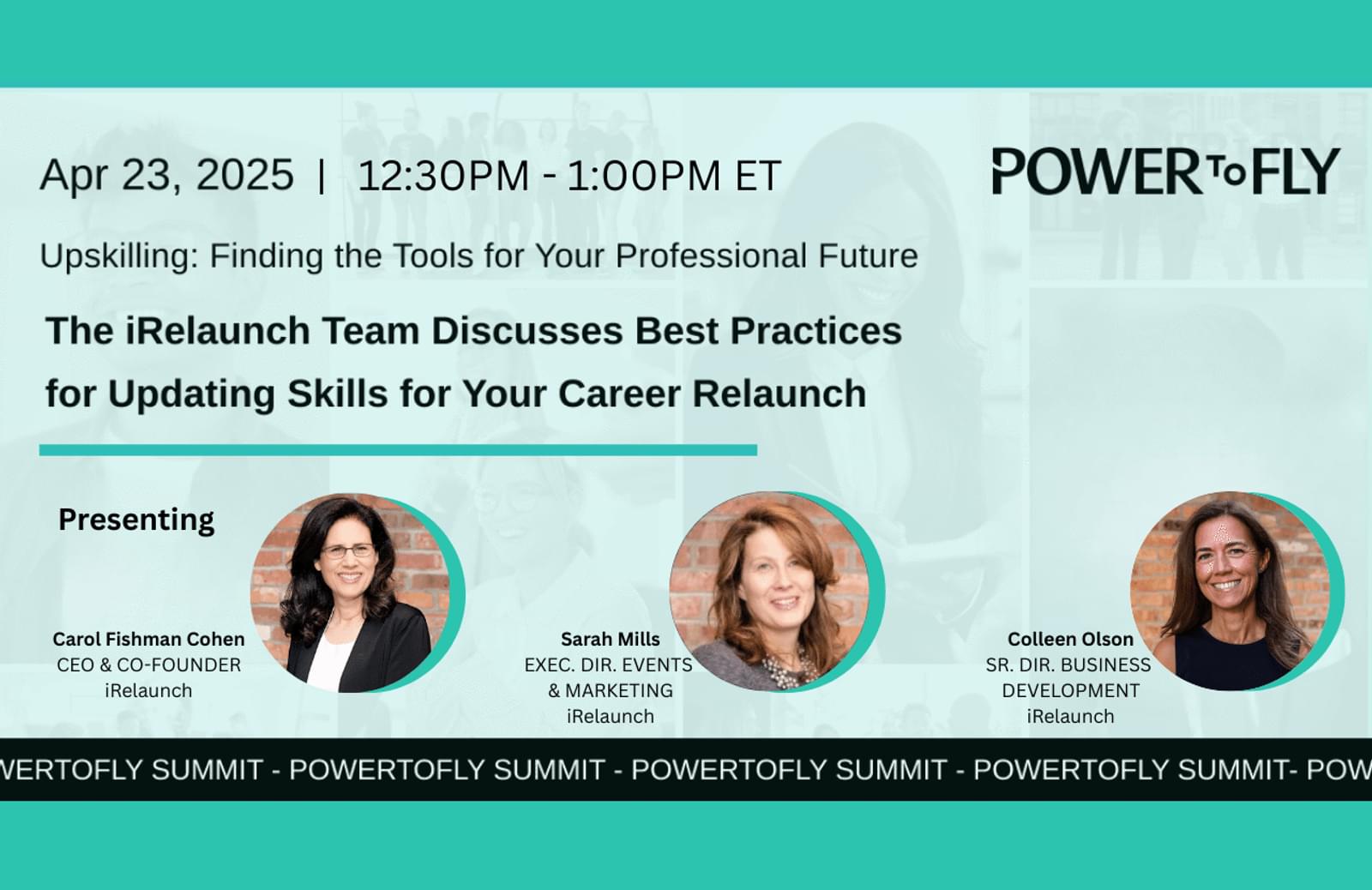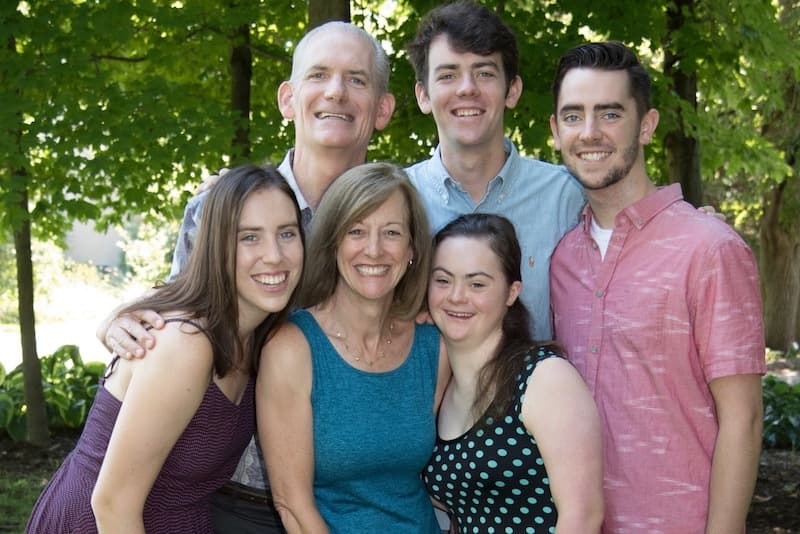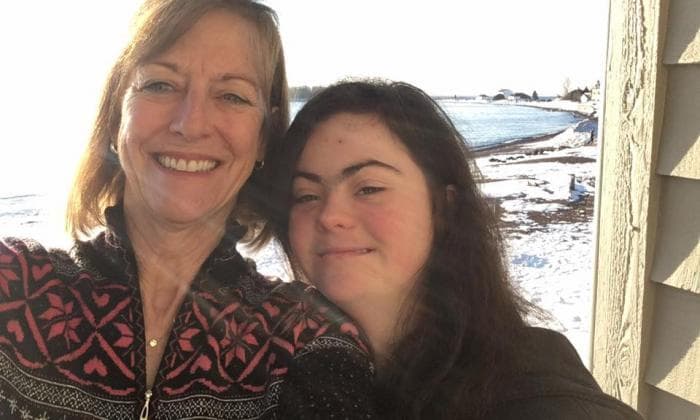

By Suzanne Wall
Suzanne Wall served as iRelaunch's Chief Operations officer from 2016 to 2020.

Most people who take a career break to stay home and care for their children can anticipate a point in the future when that job will be done. But parents of children with special needs cannot anticipate the arc of development that will lead to their child’s independence. Our career breaks are often open-ended as we continue to care for our children well into their adult years.
Previously published on Grown and Flown
Most people who take a career break to stay home and care for their children can anticipate a point in the future when that job will be done. But parents of children with special needs cannot anticipate the arc of development that will lead to their child’s independence. Our career breaks are often open-ended as we continue to care for our children well into their adult years.
Many of these parents feel trapped in a situation they didn’t ask for and can’t change. They feel the Return to Work movement doesn’t apply to them. Their letters are heartbreaking, but they resonate with me. My youngest child Amelie has Down syndrome and I am a successful relauncher.
Here is my story and some of the lessons I learned along my journey back to the workforce:
I left the workforce after my second child was born. By the time our fourth child, Amelie was in pre-school, I had been out of the workforce for 7 years. My husband had been supporting our growing family and we were worried that our financial security was entirely dependent on his employment. I wanted to contribute financially and help to diversify our income.
I remember feeling ready to “get back on the career track” but thinking about all of the obstacles I faced on the home front: Amelie’s multiple doctor and therapist appointments, regular meetings with teachers and caseworkers and lack of back up when Amelie was sick (she’d already been hospitalized three times). The list went on. And that was only one child. Amelie’s siblings were 5, 7 and 9 and active in scouts, sports and school activities.
That’s when, with the help of a friend, I realized that my plate was already full with critical responsibilities that would not go away once I started working. I decided to focus on the immediate needs of my family and postpone my relaunch until I could build a support network.
I chose to look at my time at home with my children as an investment. I wasn’t earning a salary or contributing to my 401K, but with everything I did for my kids I was investing in their future independence.
I worked within my community to build a network of supports including respite caregivers and competent babysitters. This involved building relationships with people I could depend on.
We started to build in financial supports – a 529 account for the future education of all our children and a special needs trust to support Amelie after we were gone. And I began the complicated process of investigating and applying for federal, state and county services that would provide her with financial assistance and enable her to live independently as an adult.
Our goal for Amelie has always been independence. We weren’t sure what that would look like but we did know that her level of independence would be determined by her capabilities. My aim was to do everything I could to help her achieve her highest potential.
If you’ve been the “primary caregiver,” it’s time to start sharing this job with your spouse or partner, your other children, family members or anyone who can be a part of your child’s life. What would happen if I were hit by a bus? Who would know which pediatrician best understood her needs (or even where the pediatrician’s office was located)?
They say it takes a village to raise a child. Well, it takes a special village to raise a special needs child. Not every babysitter is going to be capable of caring for a child with disabilities. It took time but I found a community of other parents in similar situations. Together we built a support network that works for our families and our children.
We’ve made every effort to make sure Amelie has been included in activities with her peers. As she got older, I found some of my best caregivers were her high school classmates who offered to drive her to school activities and tutor her in reading and math.
Bottom line, you can’t do this alone. Find your people and make them a part of your child’s life. Both you and your child will be better off and you will be better prepared to step back into the workforce when the time is right.
Use your career break to develop and polish your skills. This advice that we give to everyone who is on a career break may seem like a heavy lift for parents of children with special needs who are already stretched thin. However, as I look back, I realize that my role as an advocate for my child helped me to hone skills that would be useful in the workforce.
Anyone who has successfully navigated the IEP (individual education plan) process for their child or advocated for extra services or adaptations in the classroom knows what I mean. There are many opportunities to take leadership roles in organizations that serve the disabled and special needs communities. By volunteering with organizations that benefited my daughter, I got out of the house and into the public eye where I could continue to develop my organizational and leadership skills.
By virtue of your child’s needs, you become an expert in an area where others can benefit from your knowledge. Many a relaunch story involves parents transitioning into professions they were drawn into by caring for their child’s needs.
When Amelie started kindergarten, I was anxious to get back to the workforce, but I found myself hesitating. My husband’s job required a fair amount of travel and we had just moved to a new state where we didn’t have family or friends. I had to build a whole new support network of doctors, caregivers, friends and advisors.
It wasn’t until our oldest child could drive that I was able to return to the paid workforce. I relaunched into corporate banking, returning to my pre-career break profession. It felt good to be contributing financially again. I’d developed a network of supports within the community and also arranged with my employer to work from home when necessary. I liked the work and was proud of landing a job during the recession after a 15-year career break.
My return to work also had a positive impact on the rest of the family. Amelie’s older siblings learned to take responsibility for each other, working out rides to and from school and practices, picking up their sister from her after-school program and helping with chores – all things I had taken care of when I wasn’t “working.”
This arrangement worked well for several years but when our third child was getting ready to leave for college, we realized it wasn’t sustainable. Amelie was now in high school and we only had a few more years to take advantage of the services the school system provided. After that, she would be on her own with few job skills and no plan for her life as an adult.
My job was going well. I had been promoted, taking on more responsibilities and working longer hours. But as my older children left for college, my supports at home began to evaporate. I found myself taking time away from work to attend to Amelie. Lunch breaks were spent scheduling appointments and coordinating rides and caregivers. By the end of the year, I had used all my vacation time and I was exhausted, resentful and worried that I wasn’t doing enough to help my daughter prepare for adulthood.
My husband and I were afraid we were letting our goals for Amelie’s independence slip away, so we took a hard look at our situation and reassessed our options. We went back to rule #2 and asked ourselves if we were properly investing for the future. We realized that the next few years would be critical to Amelie’s success as an adult and that we didn’t want to miss an opportunity to prepare her for the next step.
I “retired” from US Bank and focused on helping Amelie make the most of her high school career. During those years she played on several Unified Special Olympics teams and represented our state in a basketball team that took silver in the USA Games. She performed at several school assemblies, modeled in fashion shows and had a speaking role in a feature length film.
She had lots of friends both with and without disabilities and was even voted homecoming queen her senior year. Last month she addressed a crowd of over 600 people at a fundraising event with a speech she had written herself. And this fall she will leave home to attend a 2-year college program designed specifically for people with intellectual disabilities. Her future is bright and our hopes for her eventual independence are being realized.
The day our daughter graduated was a stand out day for her and our family. During this period, and within a year of leaving the bank, I reconnected with iRelaunch which was growing rapidly. They needed help managing the internal operations of the company, an opportunity I couldn’t pass up. One project led to another and before I knew it, I was working full time as the company’s COO.
This time I had relaunched into a different, more flexible work environment. I am able to work virtually so I don’t have to contend with a daily commute. Most importantly, this job allows me to be present for my daughter, attend meetings and appointments and drive her to practices and social activities when needed.
I realize that everyone has their own circumstances and challenges. Success is measured differently for each of us and our career tracks and parenting journeys are never quite what we imagined. I’ve found my way by practicing patience, investing for the future, building skills, sharing the load and above all, being flexible.

Join our growing relauncher communities on Facebook and LinkedIn. For more great guidance on your relaunch and updates on when return to work programs are accepting applications, events for relaunchers and more, be sure to sign up for our Return to Work Report and follow us on social media to stay informed!